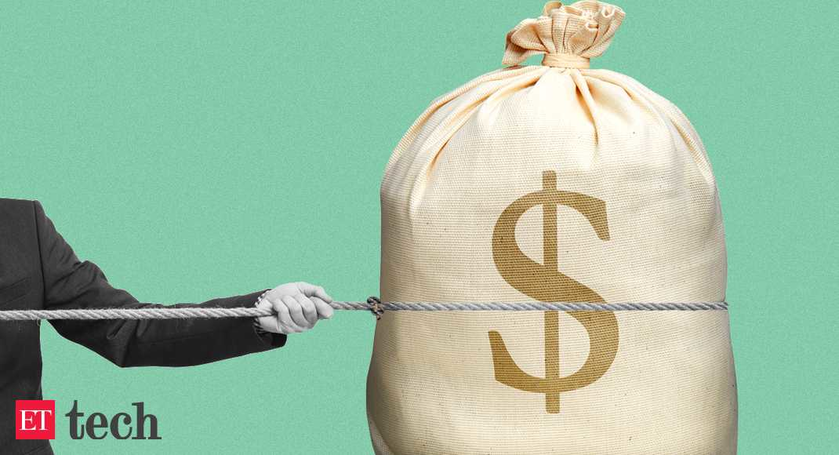(Dinarian Note: The Dominos have started to Fall...)
The turmoil followed a surprise announcement from the Santa Clara, California-based SVB that it was issuing $2.25 billion of shares to bolster its capital position after a significant loss on its investment portfolio.
Panic spread across the startup world as worries about the financial health of Silicon Valley Bank, a major lender to fledgling companies, prompted Peter Thiel’s Founders Fund and other prominent venture capitalists to advise portfolio businesses to withdraw their money, even as the bank’s top executive urged calm.
The turmoil followed a surprise announcement from the Santa Clara, California-based SVB that it was issuing $2.25 billion of shares to bolster its capital position after a significant loss on its investment portfolio.
SVB’s stock plunged 60% on Thursday and its bonds posted record declines, igniting a broad selloff in US bank shares that also spread to Asia and Europe.
Founders Fund asked its portfolio companies to move their funds from SVB, according to a person familiar with the matter who asked not to be identified discussing private information.
Coatue Management, Union Square Ventures and Founder Collective also advised their portfolio companies to pull their money, people with knowledge of the matter said. Canaan, another major VC firm, told its portfolio companies to remove their cash on an as-needed basis, according to another person.
SVB Financial Group chief executive officer Greg Becker held a conference call on Thursday advising clients of SVB-owned Silicon Valley Bank to “stay calm” amid concern about the bank’s financial position, according to a person familiar with the matter.
Becker held the roughly 10-minute call with investors at about 11:30 a.m. San Francisco time. He asked the bank’s clients, including venture capital investors, to support the bank the way it has supported its customers over the past 40 years, the person said.
Representatives for Founders Fund, Coatue and Union Square Ventures declined to comment. Representatives for Silicon Valley Bank, Canaan and Founder Collective didn’t immediately respond to requests for comment.
In its note to companies, Founder Collective said: “Over the long term, we don’t believe that deposits are likely at risk, but the shorter term is hard to predict.”
Worries surrounding the lender ricocheted around Silicon Valley and Wall Street on Thursday, with a gauge of US bank stocks plunging the most since June 2020.
There is “a good deal of panic,” said Jenny Fielding, managing partner at The Fund, which invests in early stage companies. Fielding said she is watching the situation with the bank closely and has not yet advised her portfolio companies on how to proceed.
Garry Tan, the president and CEO of Y Combinator, warned its network of startups that solvency risk is real and implied they should consider limiting their exposure to the lender.
“We have no specific knowledge of what’s happening at SVB,” Tan wrote in a post viewed by Bloomberg News. “But anytime you hear problems of solvency in any bank, and it can be deemed credible, you should take it seriously and prioritise the interests of your startup by not exposing yourself to more than $250K of exposure there.”
He added, “Your startup dies when you run out of money for whatever reason.” A representative for Y Combinator declined to comment.
Venture firm Tribe Capital has also advised its portfolio companies to move some, if not all, of their balances from SVB.
“What’s important to understand is that banks all have leverage and they use deposits, so almost by definition any bank with a business model is dead if everyone moves,” Tribe cofounder Arjun Sethi told portfolio companies in a communication reviewed by Bloomberg. “Since risk is nonzero and the cost it tiny, better to diversify your risk if not all,” he added.
Another firm, Activant Capital, sent emails and texts to its portfolio company CEOs encouraging them to transfer their SVB balances to other lenders, and is helping some move capital to First Republic Bank, CEO Steve Sarracino said.
In an email on Thursday morning signed by Mark Lau, head of Silicon Valley Bank’s venture practice, SVB said it had heard from many of its clients over the part 24 hours regarding questions about the company’s 8-K filing on Wednesday, according to the contents of the email about the conference call reviewed by Bloomberg.
SVB’s shares sank to their lowest close since September 2016 on Thursday. Becker’s call was reported earlier by the Information. The shares continued to tumble in late trading, falling as much as 30%.
“This is a classic bank run, and when the bank run starts you don’t want to be the last guy there,” Ava Labs president John Wu said in an interview with Bloomberg Television. Wu said that his company had “already diversified” away from its reliance on Silicon Valley Bank.
A startup CEO who asked not to be identified said his firm tried unsuccessfully throughout Thursday to withdraw millions of dollars from Silicon Valley Bank. Several other clients of the bank told Bloomberg they were able to take out cash on Thursday without significant issues, though at one point during the day one of them couldn’t access the SVB website.
Some VCs said they were standing by the bank. “It is truly unfortunate that several GPs and companies are making a tough situation for SVB worse by pressing the panic button,” said G Squared founder Larry Aschebrook. “SVB has supported entrepreneurs and GPs at all stages of their businesses and that partnership should run both ways.”
Investor Keval Desai, founder of Shakti, said not only was he not telling his portfolio companies to withdraw funds, but he placed an order to buy the bank’s stock today, with a limit order of $101.
“I am not Warren Buffett,” Desai said, cautioning he was not dispensing investment advice. “But I think this is a buying opportunity.”
One prominent investor, Mark Suster, warned companies against overreacting to news about the bank. “I believe their CEO when he says they are solvent,” Suster wrote, “and not in violation of any banking ratios”.
Eren Bali, the CEO of the startup Carbon Health, also said his company had confidence in SVB. “We don’t believe there’s any risk with deposits,” Bali said. He called SVB a “very reputable, well regulated bank” and said it “has done an incredible job supporting the startup ecosystem so we’re hoping they’ll recover quickly.”
An email thread of more than 1,000 founders from Andreessen Horowitz was abuzz with the news on Thursday, with many encouraging each other to pull cash from the bank.
At one point on the thread, general partner David George weighed in. “Hi all,” he wrote in a post reviewed by Bloomberg. “We know you have questions about how to handle the SVB situation. We encourage you to pick up the phone and call your GP.”
A similar thread was circulating among chief financial officers of big startups, a partner at a major venture firm said.
On the threads, many startup founders and executives worried how a collapse of SVB would affect Silicon Valley’s infrastructure.
The bank could try to liquidate its stakes in portfolio companies, which would further drive down the already flailing valuations of many startups. Those lower valuations in turn would further weaken the balance sheets of other banks, hedge funds and crossover funds that hold the same assets.
Dan Scheinman, an investor who has backed companies including Zoom Video Communications Inc., said he fielded calls Thursday from two early-stage companies in his portfolio wondering if they should close their accounts with the bank. He advised them to seek more information before taking any steps.
“What do we know about banks you would switch to? Are they in better or worse shape?” he said he advised. “It is a pain to switch, but it is more of a pain if the bank fails.”































